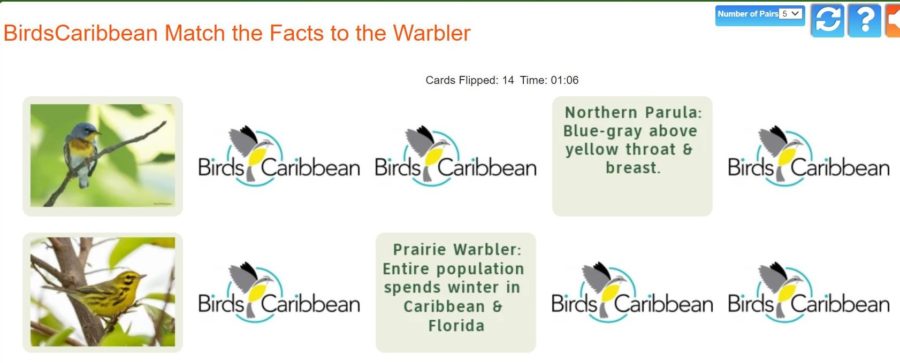Celebrate World Migratory Bird Day (WMBD) with us in our virtual “Birds Connect Our World” edition! Have fun learning about a new migratory bird every day. We have colouring pages, puzzles, activities, and more. Download for free and enjoy nature with your family at home.
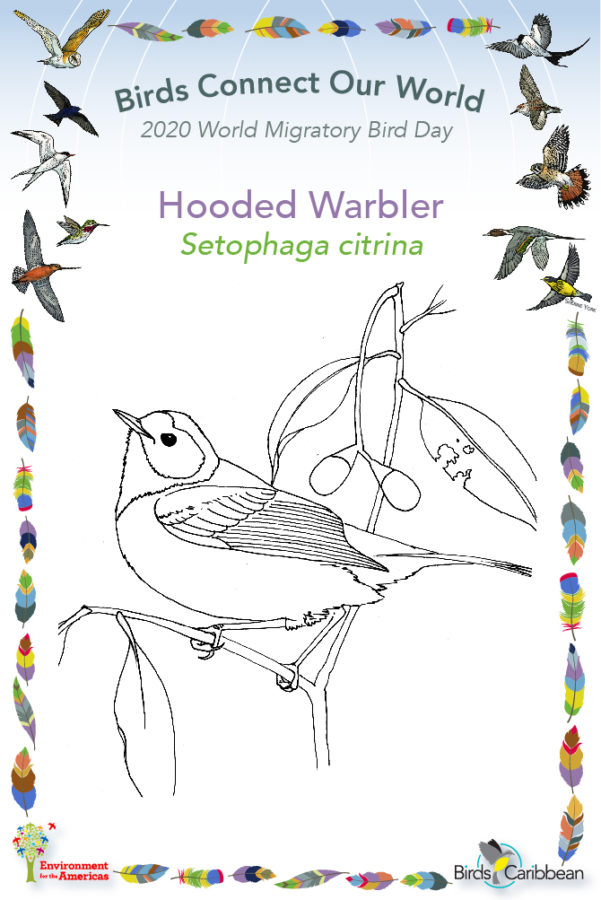
Migratory Bird of the Day: Hooded Warbler
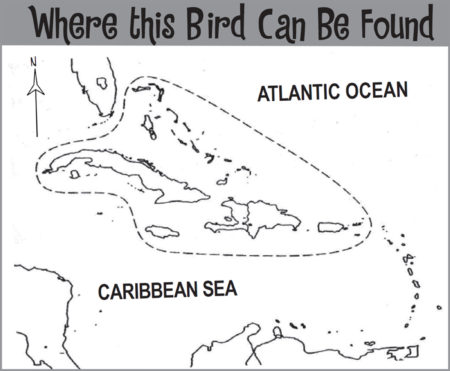
This is another Warbler where the name gives us a clue to what the bird looks like! Males of this species can be recognized by the striking black ‘hood’ surrounding it’s bright yellow face. They also have bright yellow underparts and an olive-green back. Females may show a faint hood but these vary depending in part on age. First year birds lack a hood. Another great ‘clue’ to identify this warbler is the way it flicks and fans its tail, revealing white outer tail feathers, as ‘flashes’ of white.
Hooded Warblers breed across Midwestern and eastern parts of the US. They are long-distance migrants and head south to Central America, South Mexico and the Caribbean in Fall. They will spend the winter here. During this time they are most commonly found in the Bahamas and the Greater Antilles. On their migration they may stopover in Jamaica. These little birds like to use understory vegetation in forests and mangroves. This ‘lower level’ living makes them a bit easier to spot compared to the many warblers who prefer the tree-tops! Here they will be looking for insects and spiders to eat. You might spot them looking for food on the ground.
Both male and female Hooded Warblers defend territories during the winter. This means you’re unlikely to see them together (unless they are fighting over a territory!). The way that Hooded Warbler’s flick their tail, flashing white patches, seems to help them catch insects. It could be that it causes insects to take flight, making them easier to see or catch. As with many other warblers, Hooded Warblers migrate at night and are vulnerable to collisions with made-made structures. Learn more about this species, including its range, photos, and calls here.
Colour in the Hooded Warbler!
Download the page from Migratory Birds of the West Indies Colouring Book. Use the photos below as your guide, or you can look up pictures of the bird online or in a bird field guide if you have one. Share your coloured-in page with us by posting it online and tagging us @BirdsCaribbean #WMBD2020Carib
Listen to the call of the Hooded Warbler
The call of the Hooded Warbler is a loud and metallic-sounding “chip” . Males and females make this call when defending their territories.
Puzzle of the Day
Click on the images below to do the puzzles. You can make the puzzle as easy or as hard as you like – for example, 6, 8, or 12 pieces for young children, all the way up to 1,024 pieces for those that are up for a challenge!
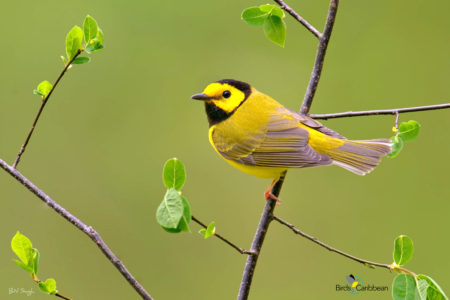
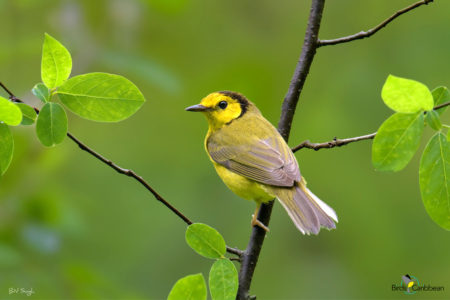
Activity of the Day
FOR KIDS: So far we have met five different Warblers that migrate to the Caribbean. How much can you remember about each one? Test your knowledge and be reminded of some facts and ID features with our Match the Fact to the Warbler game!
FOR KIDS AND ADULTS:
- Take a walk and see if you can spot a migratory warbler or any of our other migratory birds. Use a bird field guide or the FREE Merlin bird ID app to help you identify the birds you are seeing.
- Enjoy the videos below of both male and female Hooded Warbler. You can see the differences in their plumage. In both videos the birds are flicking their tails, and revealing flashes of their white outer tail feathers.
- Visit MigratoryBirdDay.org for many more free activities and resources to learn about migratory birds, their threats and conservation actions you can take.

